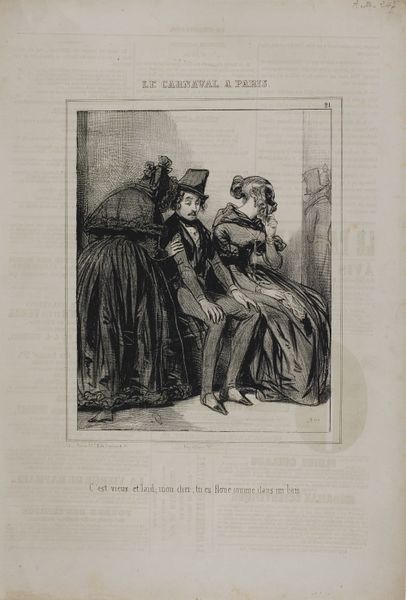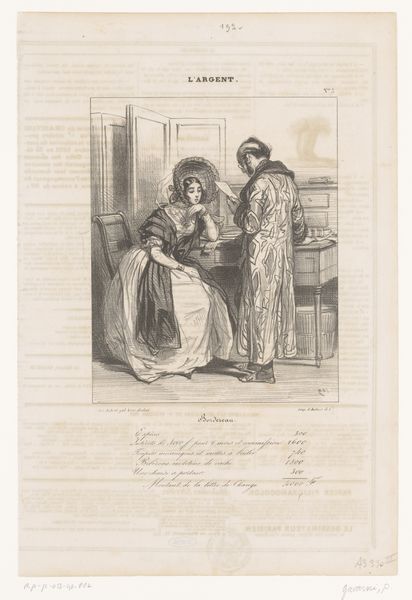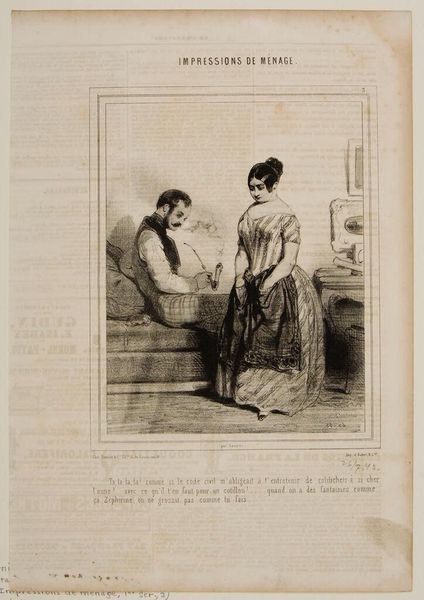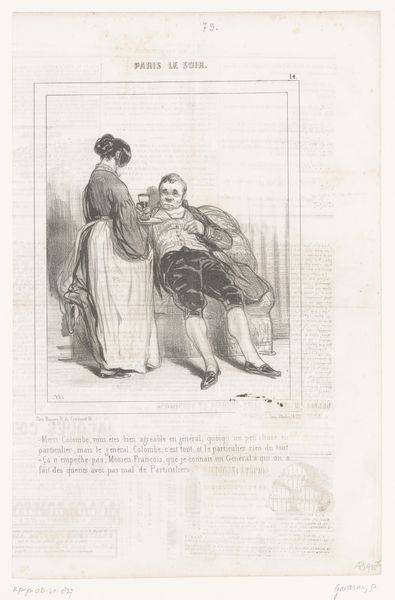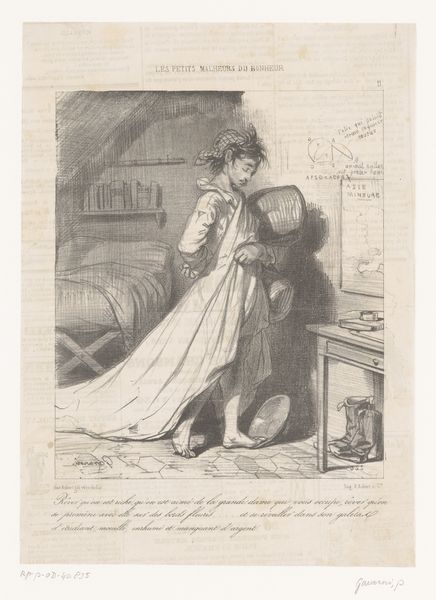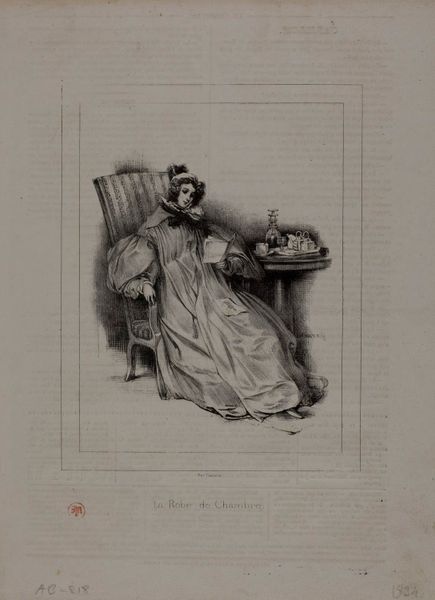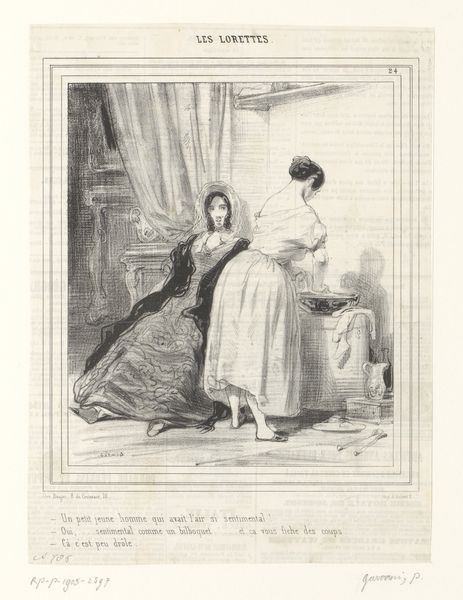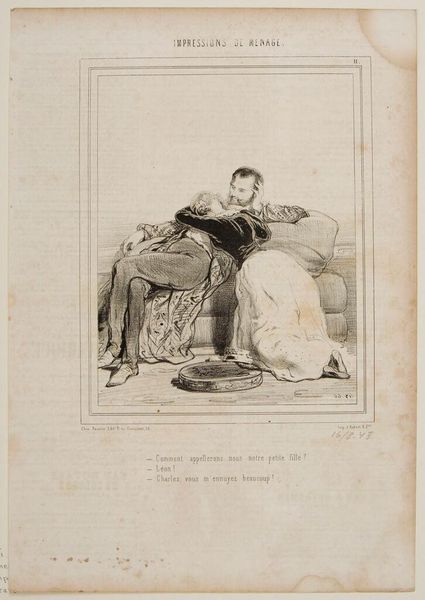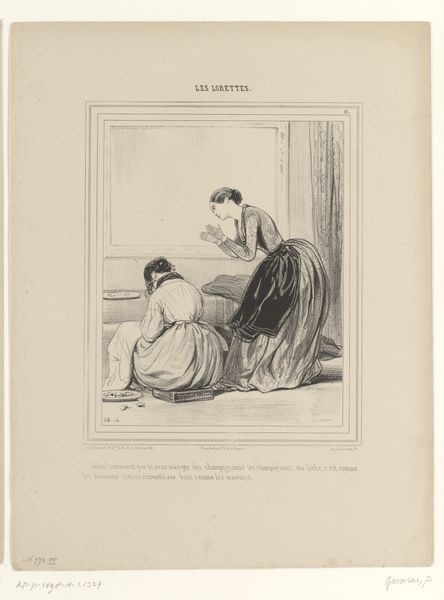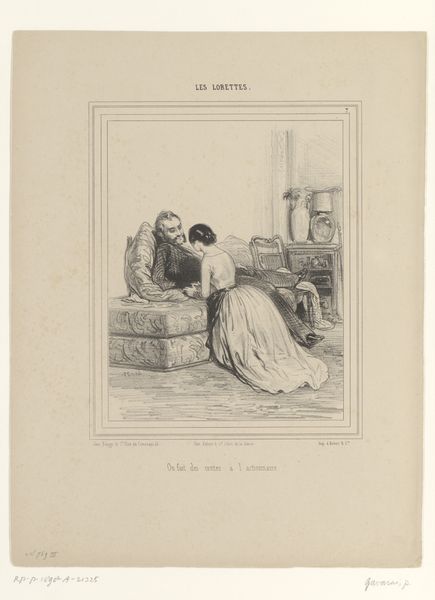
drawing, lithograph, print, paper
#
portrait
#
drawing
#
lithograph
# print
#
paper
#
romanticism
#
france
#
genre-painting
Dimensions: 145 × 140 mm (image); 311 × 226 mm (sheet)
Copyright: Public Domain
Curator: Let’s turn our attention to "The Glass of Water," a lithograph created in 1834 by Paul Gavarni. It's part of the Art Institute of Chicago's collection, a piece that invites us to consider the role of gender, class, and perhaps even care within French society of the time. Editor: My first impression? Melancholy meets domesticity. There's this young woman, sort of languidly draped, and a boy presenting her with water, but it's not celebratory; it's quiet, like a captured moment of everyday life tinged with unspoken feeling. Curator: Exactly. The image belongs to a broader artistic interest in genre painting during the Romantic era, yet Gavarni's work has an edge. He wasn't simply illustrating everyday scenes; he was commenting on social conditions, particularly the restricted roles afforded to women. Is she ill, is she bored? Editor: Right? I read that pose as both entitlement and entrapment. That fashionable robe, almost a prison in its drape! The boy is poised attentively. Almost frozen like the water he’s serving... Curator: Let’s not forget context, French society experienced radical transformations in its structures during the 1830s with The July Revolution, where ideas about individual liberties clashed dramatically against realities in people’s lives; “The Glass of Water" brings some light into what might had looked the more restricted, domestic, realities, as if hinting at a form of unvoiced revolution going inside the household. Editor: True. Thinking about artistic influence too, this almost theatrical staging of an intimate exchange feels both genuine and… well, a little posed. Like an interior, domestic history painting. It's beautiful, technically impressive for a lithograph of its time, but carries an ambiguity that makes it unforgettable. It really does capture some truth. Curator: Gavarni masterfully uses light and shadow to deepen the emotional weight of the work. There is definitely critique in the implicit expectations that structure everyday domestic experience. What is given, what is denied. Editor: Well said. Makes you consider all those invisible emotional economies…and perhaps this glass of water, ultimately, can't really quench her thirst for anything. Curator: Indeed, it underscores the complex layers within seemingly simple acts of service, a visual prompt for considering wider inequities present even inside of the supposed safe havens we call home. Editor: Precisely. A drop of everyday unease beautifully visualized and etched forever.
Comments
No comments
Be the first to comment and join the conversation on the ultimate creative platform.
